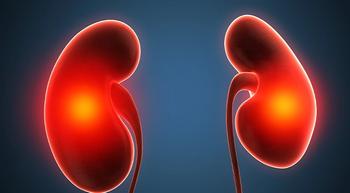
Scar Tissue Around Pancreatic Tumors May Help Predict Prognosis
The scar tissue surrounding pancreatic cancer may offer prognostic insight — and potential new treatment strategies — for patients with pancreatic cancer.
The scar tissue that forms around pancreatic cancer tumors may offer insight to patient prognosis, according to recent research published in Cell Reports Medicine.
“Previous studies have focused on the cancer cells themselves, or how much fibrosis, or scarring, surrounds the tumor,” study author, Jason Guo, a post-doctoral scholar at Stanford Medicine, said in a press release. “But our findings reveal that maybe the critical information comes not from the quantity or mass of the scar tissue, but from its internal components and organization.”
The researchers analyzed the architecture of the extracellular matrix (ECM) (noncelluar components surrounding the tumor) around 437 instances of pancreatic ductal adenocarcinoma, and they found that certain ECM patterns were related with disease-free survival (time after treatment when no sign of cancer is found) and overall survival (time from treatment until death of any cause).
Findings showed that based on characteristics of the scar tissue around the tumors, patients can grouped into two categories, one of which included patients who had a median survival nearly two years longer than the other group. According to the press release, this is a “substantial difference,” since approximately 20% to 25% of patients tend to survive five years after being diagnosed.
“Our study puts new therapeutic approaches on the table,” professor of surgery Dr. Michael Longaker, Deane P. and Louise Mitchell Professor in the School of Medicine, and senior author of the study, said in the release. “Should we be treating not just the tumor but also the scar tissue? I would say yes. Both obviously play a role in patient outcome.”
These study findings indicate that the scar tissue around the tumors may play a role in either promoting or discouraging cancer cell growth. As such, findings new drugs that block this tissue-tumor messaging could be a new option to explore.
“Pro-inflammatory fibroblasts also popped up in our analyses, which we were happy to see,” Guo said. “Knocking out these fibroblasts or inhibiting their activity is a potential target for new therapies. We also saw close relationships between B cells and these fibroblasts, which is interesting. What are they talking about? We’d love to follow up and see what cellular signals are being exchanged.”
This is not the first time that researchers looked to the materials surrounding a tumor to determine cancer prognosis. In fact, another recent study analyzed how the heathy tissue surrounding lung tumors could hold genetic information that holds clues about patients’ risk of recurrence.
READ MORE:
“In the future, I envision that a patient gets a biopsy before treatment has started, and doctors will look not just at the cancer but also at the patterns and types of cells in the desmoplasia (fibrous tissue around the cancer),” Longaker said. “This could also help doctors decide which patients are likely to need more aggressive therapy early in the course of their disease, and who could be spared invasive or harsh chemotherapy or radiation. I hope we can develop a chemotherapeutic approach that doesn’t just focus on the cancer but that also impacts fibroblasts and their role in promoting tumor growth.”
For more news on cancer updates, research and education, don’t forget to




